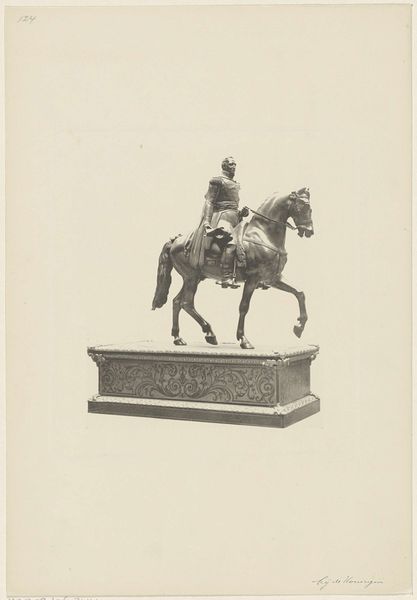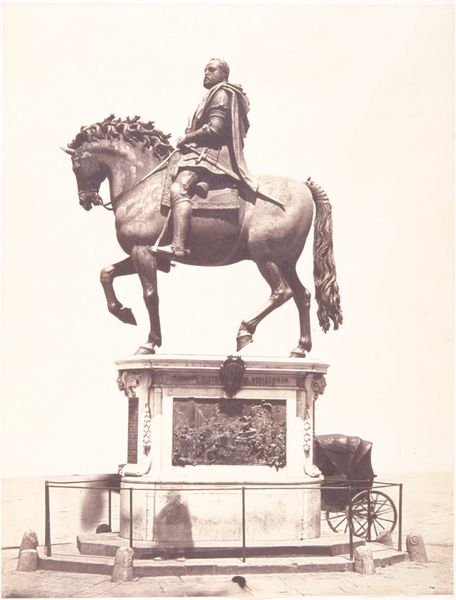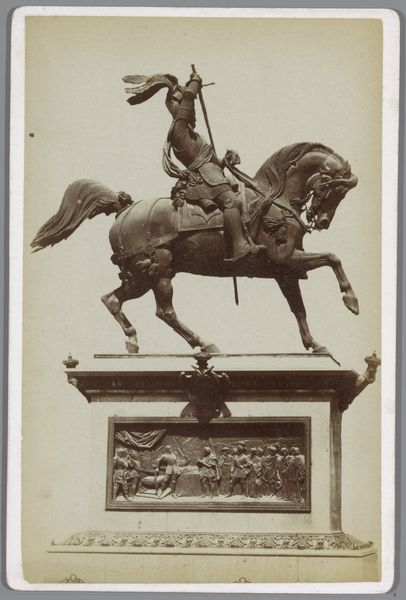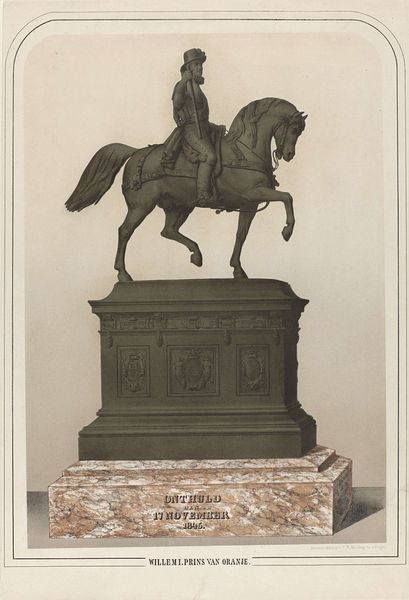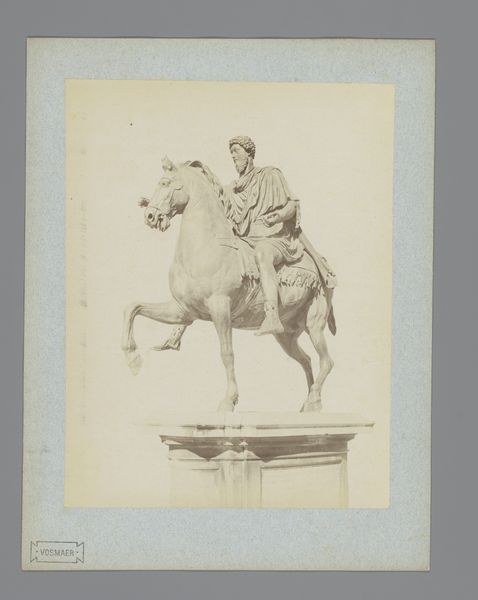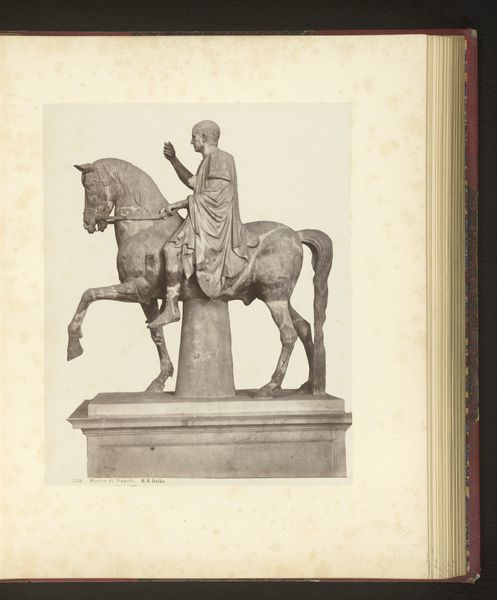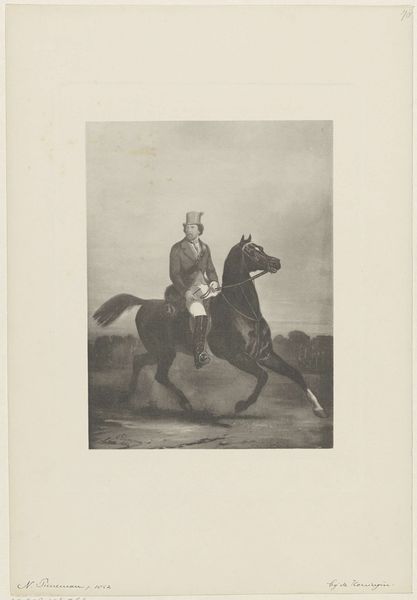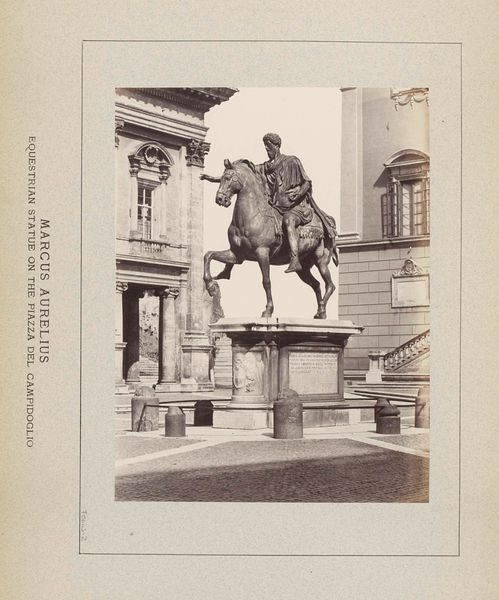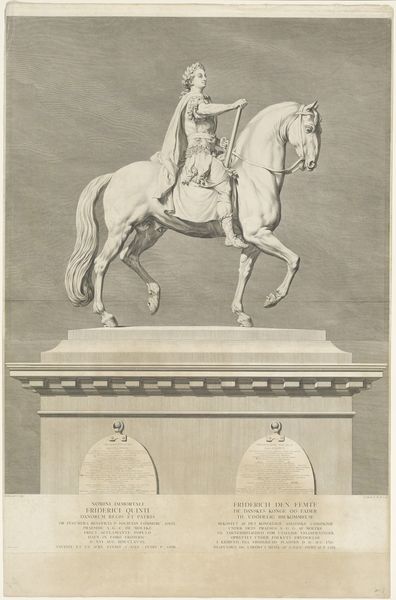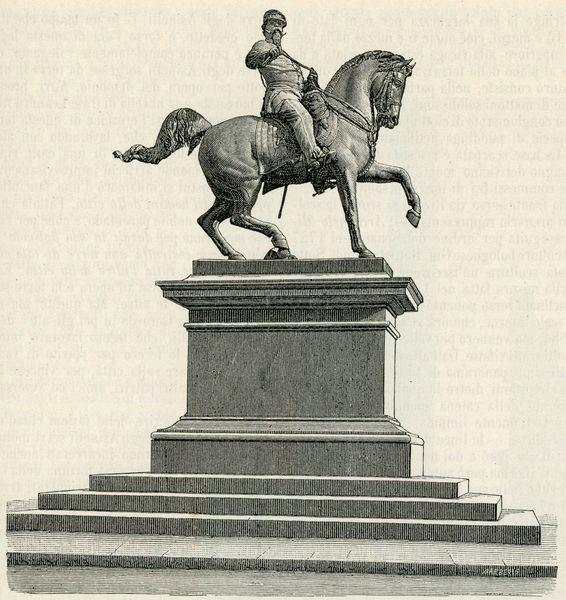
Ruiterstandbeeld van Willem I Frederik, koning der Nederlanden 19th century
0:00
0:00
anonymous
Rijksmuseum
Dimensions: height 193 mm, width 152 mm
Copyright: Rijks Museum: Open Domain
This photograph depicts an equestrian statue of William I Frederick, King of the Netherlands, and is housed here at the Rijksmuseum. The statue, like many of its kind across Europe, embodies the politics of imagery in the 19th century. Equestrian statues had long been the preserve of emperors, kings, and generals. By the nineteenth century, they became powerful symbols for rulers seeking to legitimise their authority. Think about the elaborate pedestal beneath the horse and rider, emphasising the distance between the ruler and his subjects. Also, consider the pose of the horse, controlled, yet powerful. To truly understand the statue's role, one must examine the social and political context of the Netherlands at the time and ask questions. For example, what kind of message was the statue trying to convey? What sources, such as newspapers or political pamphlets, might tell us about its reception?
Comments
No comments
Be the first to comment and join the conversation on the ultimate creative platform.
